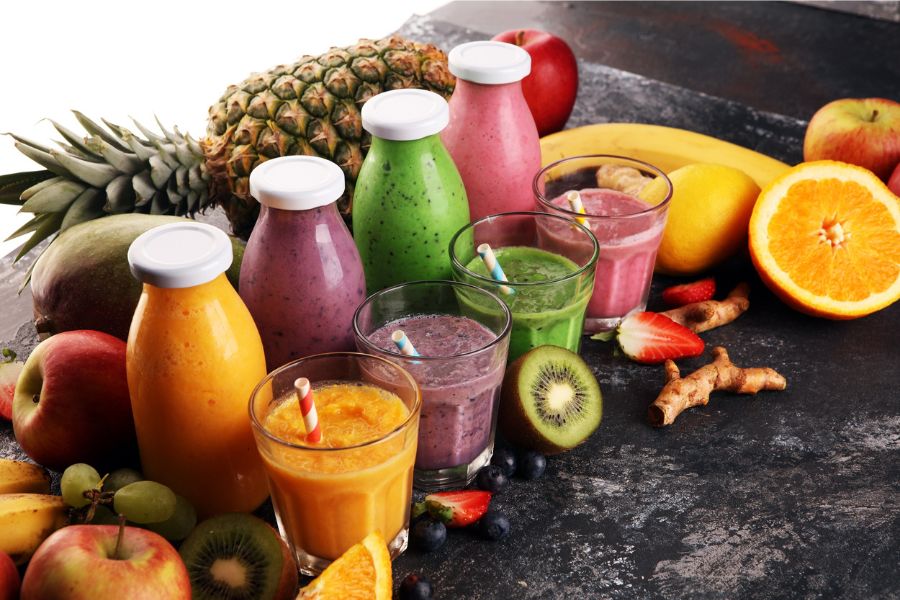Product Profile: Milk Powder
HS CODE: 0402
• The global milk powder market was valued at US$ 28.3 billion in 2018 and is projected to reach US$ 38.1 billion by 2025, with a CAGR of 4.1% from 2019 to 2025.
• World exports of milk powder increased by 3.2% in past three years, mainly exported by New Zealand and US.
• India’s exports of milk powder surged by 12% from 2015 to 2018 which is significantly higher than world average growth. Major destinations where India exports milk powder are Bangladesh, Afghanistan, Malaysia and Nepal.
• According to the data, whole milk powder comprises milk fat between 25% and 45% and has moisture levels of less than 4.5%, which makes its shelf life ranging between six months to twelve months.

The global milk powder market was valued at US$ 28.3 billion in 2018 and is projected to reach US$ 38.1 billion by 2025, with a CAGR of 4.1% from 2019 to 2025. Milk powder is a form of dry dairy product, processed and manufactured by dehydrating milk using evaporation. The key objective of making milk powder is to increase the shelf life of milk without using the refrigerator. Various types of milk powders include whole milk powder, dairy whitener, skimmed milk powder and other. It is widely consumed globally due to its nutritional benefits, which has led to its application in baked desserts, confectioneries, infant formulas and savoury items.
Source: ITC Trade Map
World exports of milk powder increased by 3.2% in the past three-year span, mainly exported by New Zealand and US. The product is witnessing burgeoning demand from emerging and developed economies due to the rising population base. As developing countries are expected to grow faster than developed countries, this implies a huge shift in consumer base to emerging markets in the coming years. These emerging and developing nations will have a large youth population. Global manufacturers can potentially tap this swiftly proliferating and young population, which can drive expenditure from consumers in varied categories such as clothing, education, technologies, and eateries. Henceforth, the expenditure on milk powder is also expected to surge.
Top trading economies of powdered milk
| Top exporting economies | Top importing economies | ||
| Nation | Exports (US$ billion) | Nation | Imports (US$ billion) |
| World | 19.01 | World | 20.15 |
| New Zealand | 4.99 | China | 2.48 |
| US | 1.51 | Hong Kong | 1.52 |
| Netherlands | 1.48 | Algeria | 1.10 |
| Germany | 1.33 | UAE | 0.92 |
| Hong Kong | 1.01 | Mexico | 0.73 |
Source: ITC Trade Map
Consumer patterns
Consumers have become occupied and busier with the advent of globalization. Their lifestyles have seen a paradigm shift, and the time devoted for household work including preparing meals, has declined significantly. This paucity of time has propelled consumers to switch towards alternatives to speed up their daily household responsibilities. Processed and packaged food as well as convenient meals have been opted for by consumers to reduce time required for preparing food. This same factor of seeking out convenient alternatives has accelerated the demand for milk powder globally. To add further, the number of working women has increased and this fuels the adoption of infant formula and consequently the growth of milk powder globally.
Uses of Milk Powder
Milk powder has a wide range of end-use applications such as infant foods, preserving of nutrients such as Vitamin C, Vitamin B12, thiamine and large amounts of protein, which also influence the global milk powder market. Furthermore, it reduces the storage and transportation costs, which helps in achieving optimal end-user pricing. Milk powder is a high source of vital vitamins and minerals such as calcium, zinc, magnesium, and vitamins A, E, K and D. It also offers other nutritional elements such as antioxidants and amino acids, which play a crucial role in cellular growth, support blood clotting and strengthen the body’s immune system.
Development of flavoured milk powder has led to new opportunities in the market. However, amalgamation of preservatives, adulteration, and stringent regulations related to infant food are challenges to be overcome by players.
| Global markets of milk powder | |
| As per their type | As per their application |
| Whole Milk Powder | Nutritional Food |
| Skimmed Milk Powder | Infant Formulas |
| Dairy Whitener | Confectionaries |
| Buttermilk Powder | Baked Sweets |
| Fat filled Milk Powder | Savouries |
| Other Milk Powder | Others |
|
Interesting History of Milk Powder In 1295, Marco Polo wrote in his travelogues that the Mongolians boiled milk, skimmed off the fat that rose to the top to make butter and dried the defatted milk in the sun. Currently almost all the powdered milk produced for human intake is spray dried. The patent for spray drying was registered in 1872 in the US. The first industrial spray drying facility was installed in 1905 for a US company by the name of Merril Soul. Rapid development of dairy industries, due to increased production of milk after World War II, brought significant improvement of milk spray driers. |
Preference of Whole Milk Powder over Milk
According to the data, whole milk powder comprises milk fat between 25% and 45% and has moisture levels of less than 4.5%, which gives it a shelf life ranging between six months to twelve months. Whole milk powder is considered as a solid form of nutritious milk. Less moisture levels in whole milk powder facilitates in retaining the nutritional qualities for long periods of time.
Regions facing limited supply of raw milk, owing to insufficient infrastructure and transportation facilities have high demand for long shelf life products such as whole milk powder. Both growth in per-capita consumption levels and growing wealth in Asia implies potential for future growth in Asian dairy demand and consequently in domestic supply and world trade.
Source: ITC Trade Map
India’s exports of milk powder surged by 12% from 2015 to 2018, which is significantly higher than the world average growth. Major destinations where India exports milk powder are Bangladesh, Afghanistan, Malaysia and Nepal. Dairy exporters from India also need to push quality milk powder, which has a huge demand in developed nations. Due to the large domestic consumption base, exports of milk powder have remained relatively subdued. In previous years, there have been instances of bans on exports of milk powder by Government of India to meet domestic demand. For instance, in 2007 and 2011, the central government banned the exports of milk powder, which hampered the earnings of exporters and created volatility on the supply side. Rearing milch animals and fodder production on non-fertile land should be promoted, which will help address the supply constraints.
However, there was good news on the export front in 2018-19, when India’s milk powder exports rose by 125% as compared to the previous fiscal. The increase has come in the wake of the incentives offered under the Merchandise Exports from India Scheme (MEIS) scheme. The incentive was initially given up to 10%, which was further revised to 20%, leading to a massive surge in exports. As of now, the government is trying to implement WTO compliant policies, which need to work to escalate supply. Engaging in international collaborations with leading players like New Zealand, EU and US for enhancing quality will also play a vital role in uplifting India’s milk powder exports.













Great info!